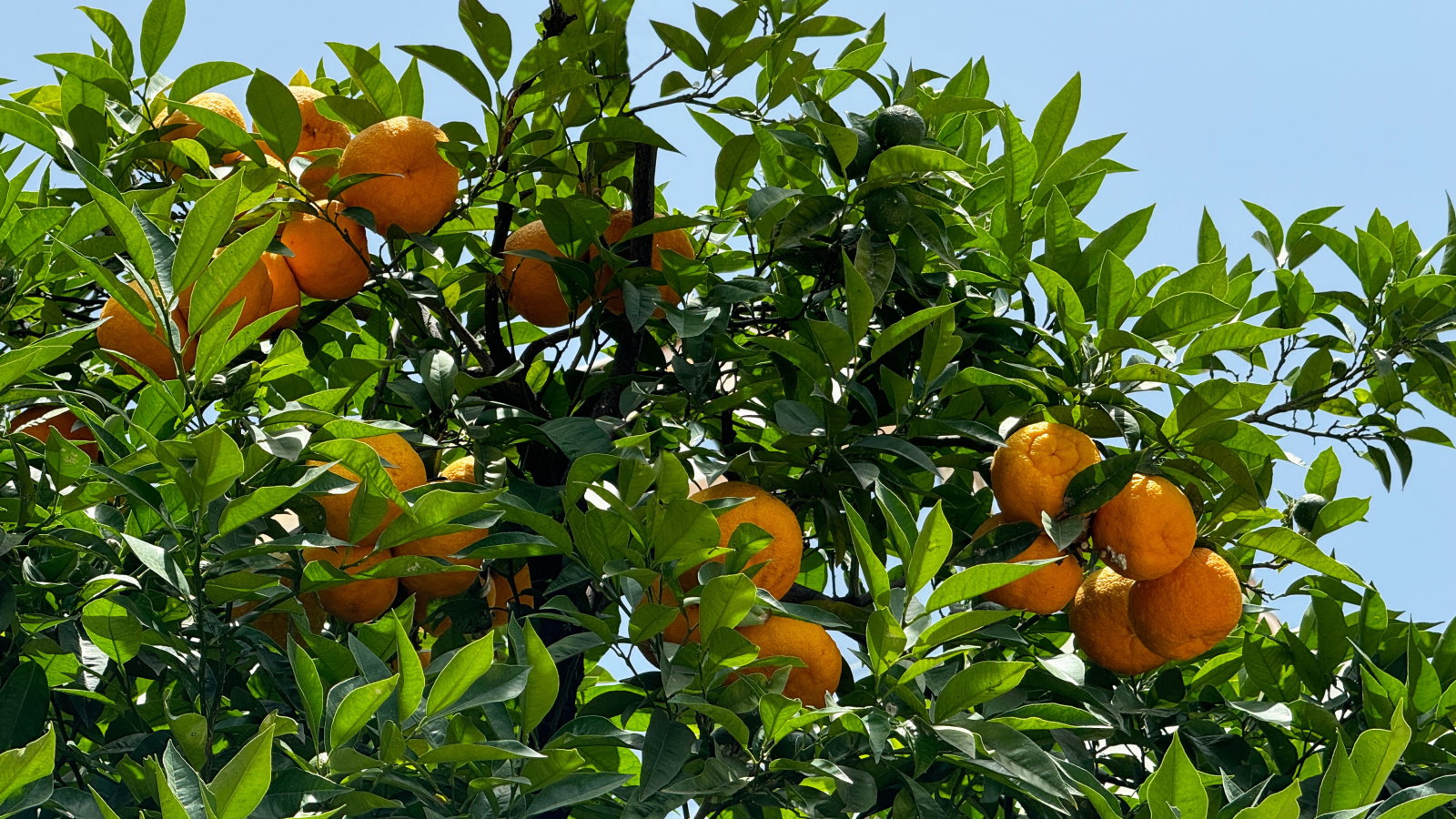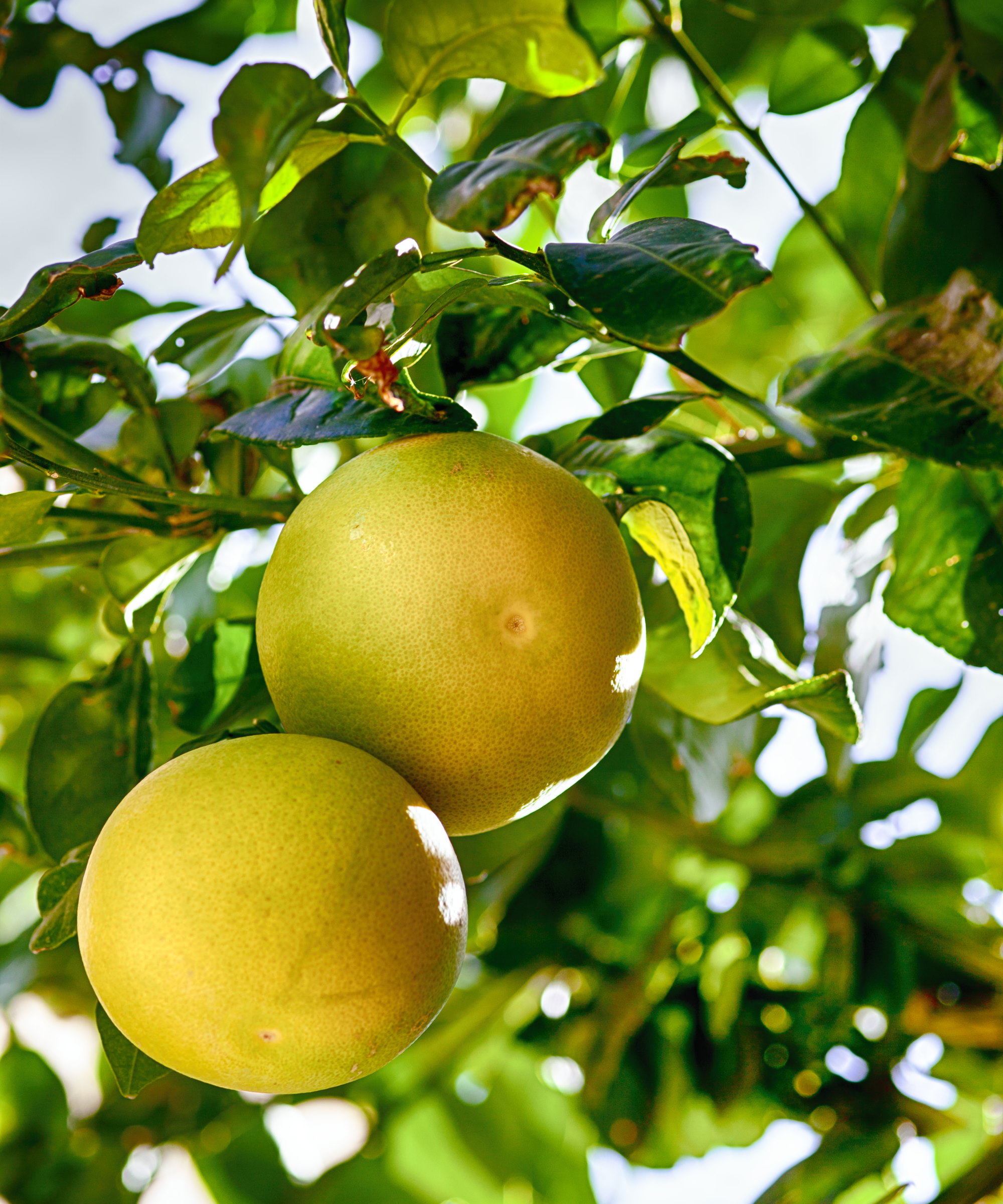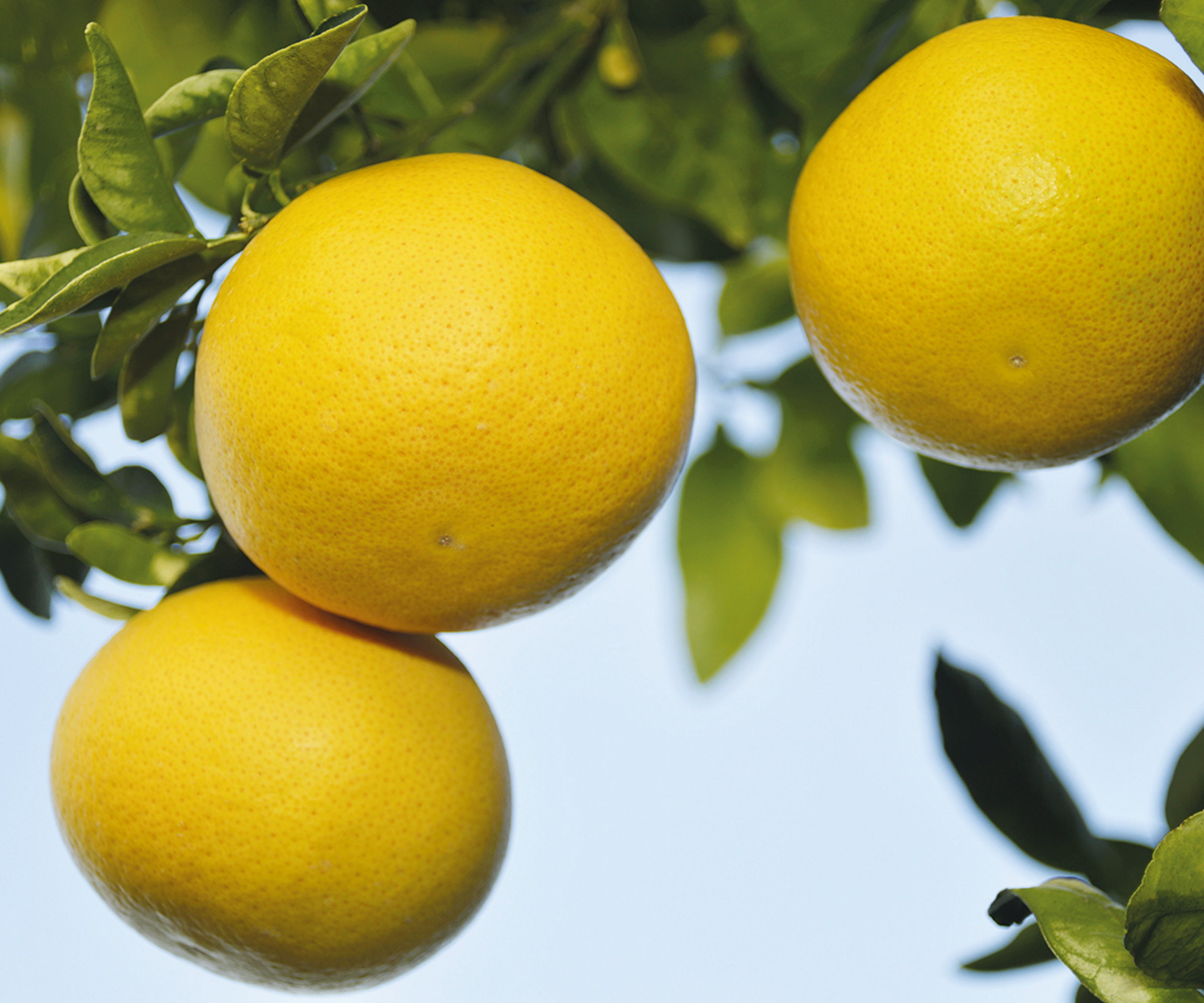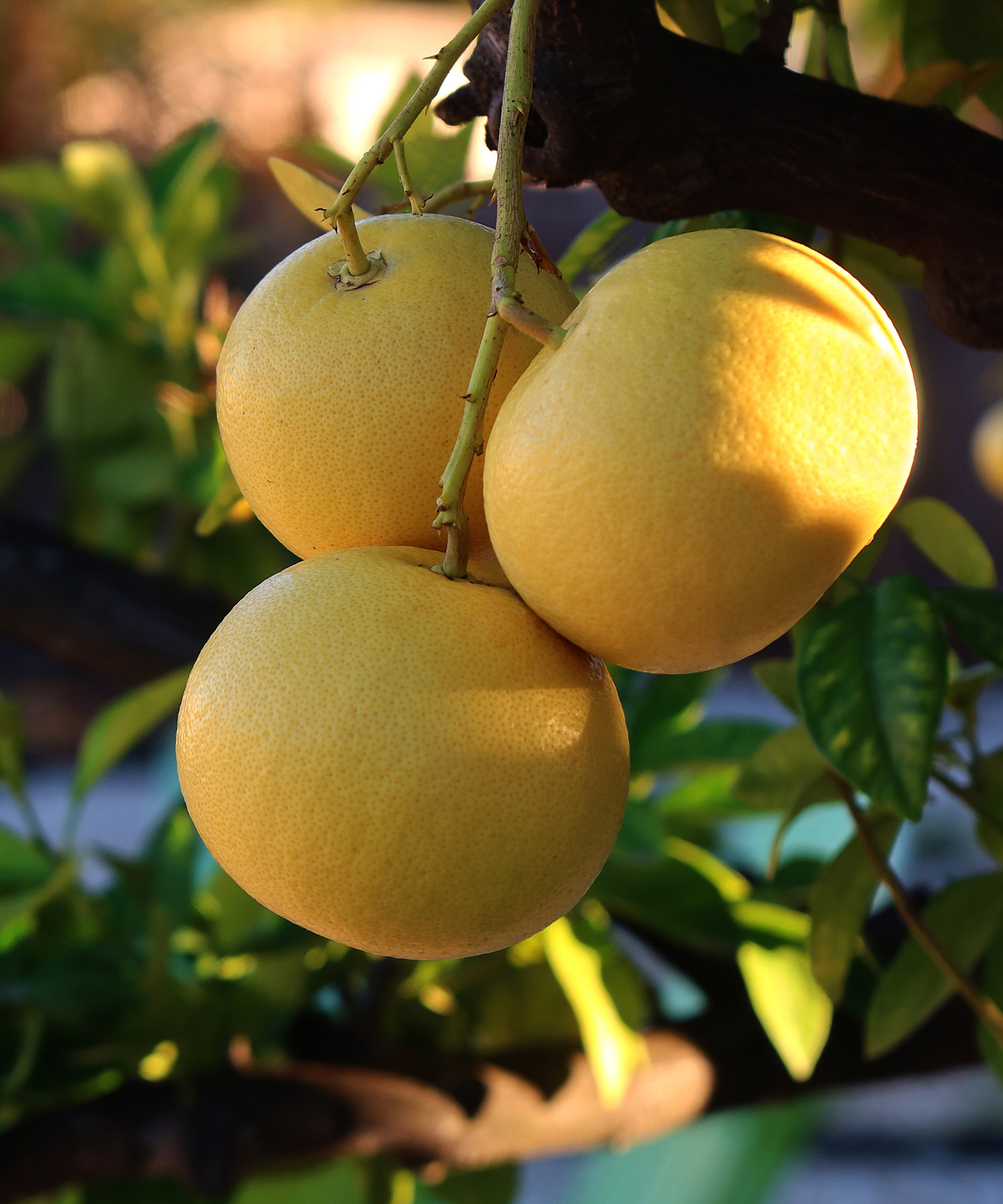How to grow grapefruit for homegrown sweet and tangy, highly nutritious harvests – a fruit tree expert shares their planting and care tips
From planting to harvesting, this is all you need to know about grapefruit trees


Grapefruits are highly popular, healthy fruits with yellow-orange skin and flesh that can be white, pink, or red. Whether enjoyed for breakfast, in juices, smoothies, cocktails, or eaten as snacks, the sweet and tart tropical fruits are packed with vitamins and antioxidants.
The fruits are commonly found in stores and markets, but you can grow grapefruit trees to harvest your own. The trees require low maintenance, although they need the right climate for optimal fruit production. Getting the citrus tree care and conditions right can mean 20 or more grapefruits per tree each year.
This guide looks at how to grow grapefruit outdoors or have trees in pots to bring indoors for winter. It includes tips from an expert in fruit trees to help you care for grapefruit trees confidently and enjoy big fruit harvests.

How to grow grapefruit - an expert guide
Grapefruit trees (Citrus x paradisi) are stunning evergreen trees that can grow in US hardiness zones 9-11. The sub-tropical trees can grow to 20 to 25 feet tall and make fantastic ornamental additions to any space, though the size can be controlled through pruning.
Grapefruits are self-pollinating - so you can get a harvest with just one tree - and there are different varieties to grow in backyards, with the likes of ‘Ruby Red’ and ‘Star Ruby’ among the most popular for their low maintenance and quality of fruits. For example, the 'Ruby Red' grapefruit tree at Fast Growing Trees produces seedless fruits and can grow happily in the ground or a pot.
How to grow grapefruit - planting tips

Plant a grapefruit tree in a sunny spot in the yard, somewhere it can get at least eight hours of sunlight each day. The trees can grow in part-shade, but will not fruit as well as when growing in a sunny position.
Trees are cold-hardy to 28°F when growing outdoors, so they need a sunny and frost-free spot. That includes avoiding planting trees in the shade of buildings. They need a planting location at least 12 feet from homes, structures, or walkways to give them room to mature.
Grow a grapefruit tree in a fertile and well-draining soil type. Trees will struggle in heavy soils, and Bethany Lakatos, plant expert at Fast Growing Trees, says: ‘Because they are sensitive to root rot, the key to success with grapefruits is getting them in well-draining soil.’
Either improve the soil structure with lots of organic matter before planting, or consider growing the fruit tree in a container if your soil is unsuitable.
Bethany Lakatos recommends planting the fruit tree in the fall. She says: ‘Planting in fall allows the tree time to settle in after the heat has passed but before the cooler weather arrives.’ The alternative is to plant in spring due to the lower temperatures, which means the tree can establish roots before summer.
As for how to plant a tree, start by digging a large hole wide and deep enough to accommodate the root ball. Place the tree inside, ensuring it's level in the hole. Plant the tree at the same height as the container, and backfill the hole with soil. Firm the soil down to remove air pockets and water it deeply.

Bethany Lakatos is a Plant Expert at Fast Growing Trees. She graduated with honors from Oregon State University with a BS in Horticulture with a focus on sustainability and a certificate in Permaculture Design. She loves to talk about soil and edible landscaping, and lives just outside Fort Mill, SC, where she has the opportunity to delight and geek out over all the plants in the Fast Growing Trees nursery
How to grow grapefruit - care tips

- Watering - Regular watering is vital after planting a grapefruit tree to get it off to a healthy start. Keep a close eye on when to water and try to do it every few days for the first two weeks, then at least weekly over the next few months. Bethany Lakatos advises that, even when trees are established, they want to be watered ‘regularly’ during the growing season. ‘When planted outdoors, use a slow-dripping hose, moving it to a different location around the dripline each time you water,’ she says. ‘For a container plant, thoroughly saturate, then give the plant time to dry out about 2” from the top of the soil line.’ Use a soil moisture meter, available at Amazon, to avoid overwatering plants and increasing their susceptibility to root rot.
- Fertilizing - Grapefruit trees growing outdoors in fertile soil often need little additional feeding. However, if the soil lacks nutrients or trees need a pick-me-up, they can benefit from feeding twice a year - in spring and summer. You can get citrus-specific feeds that are always the best choice for fertilizing citrus trees. Pick a feed with a fairly balanced NPK ratio that contains iron and zinc. A good example of a feed to use is this organic citrus-tone food, available at Amazon, which is specially formulated for all types of citrus trees. Potted citrus trees need extra feeding courtesy of a citrus-specific liquid fertilizer every few weeks between spring and fall.
- Pruning - Grapefruit trees do not need lots of pruning. The time to prune the citrus trees is in spring, and the main reasons to prune these fruit trees are to remove dead, damaged, diseased, or crossing branches. This keeps the tree healthy and improves air circulation and light penetration. If you want to control the size of your grapefruit tree, do so by pruning in early spring and cutting back unwanted vertical or side growth to create the desired framework.
- Harvesting - Grapefruit trees start fruiting after they reach 3-5 years of age, and any fruit that does appear before then is best removed so the tree can focus on developing strong roots and shoots. The season for picking grapefruit is in late fall when the fruits have ripened, though they can take 6-12 months to ripen, depending on your climate. The signs of a ripe fruit come down to the color developing from green to yellow or orange and being firm to the touch. The fruit gets sweeter the longer it is on the tree, but needs picking before it gets lumpy and over-ripe. Simply twist a grapefruit, and it should separate from the branch easily.
FAQs
Can you grow grapefruit in containers?
You can grow grapefruit in containers if you only have a small growing space or your climate isn’t suitable for outdoor citrus trees year-round. Dwarf grapefruit trees are suitable for growing in pots, such as the Oro Blanco grapefruit tree from Nature Hills, which will happily grow in containers.
‘If you live in a colder zone, try growing a grapefruit in a container and moving it indoors once temps hit the mid-50s at night,’ advises Bethany Lakatos from Fast Growing Trees. ‘Buying a grapefruit plant for container-growth is best to do in the spring or summer, which will allow you to get to know the plant during the growing season.’
Bethany recommends that ‘clay containers work better than plastic for citrus trees’ and that indoor fruit trees are best put in a greenhouse, conservatory, or a sunny window for the colder months.
What is the lifespan of a grapefruit tree?
Grapefruit trees can live for over 50 years when grown in ideal conditions and cared for properly.
As well as knowing how to grow grapefruit, there are other choices if you do want to add citrus trees to your backyard ideas. You can grow orange trees, lemons, limes, or kumquats in the ground or containers, depending on your climate.
When you live in colder zones, growing kumquats outdoors can be a good option as they can withstand temperatures down to 18°F. The good news for growers in colder regions is that most citrus trees can be grown in containers and moved indoors when the temperatures drop.
Sign up to the Homes & Gardens newsletter
Design expertise in your inbox – from inspiring decorating ideas and beautiful celebrity homes to practical gardening advice and shopping round-ups.

Drew’s passion for gardening started with growing vegetables and salad in raised beds in a small urban terrace garden. He has worked as a professional gardener in historic gardens and specialises in growing vegetables, fruit, herbs, and cut flowers as a kitchen gardener. That passion for growing extends to being an allotmenteer, garden blogger, and producing how-to gardening guides for websites. Drew was shortlisted for the New Talent of the Year award at the 2023 Garden Media Guild Awards.
You must confirm your public display name before commenting
Please logout and then login again, you will then be prompted to enter your display name.
-
 The biggest curtain trends to follow in 2025 – 8 key looks to shop that will instantly elevate your rooms
The biggest curtain trends to follow in 2025 – 8 key looks to shop that will instantly elevate your roomsThese are the colors, styles, and materials to embrace in your windows this year if you want desirable drapes, plus our favorite places to shop the trends
By Lilith Hudson
-
 Reese Witherspoon upgraded a small corner into a cozy reading nook – designers say you can replicate her 'ultimate little escape' (from $18)
Reese Witherspoon upgraded a small corner into a cozy reading nook – designers say you can replicate her 'ultimate little escape' (from $18)'It’s all about comfort, calm, and just the right amount of cozy': You only need three things to follow Reese's example – and it's not only for book lovers
By Megan Slack